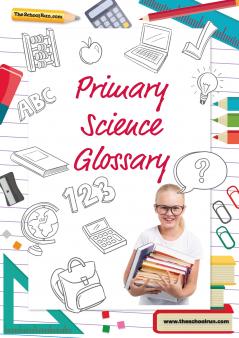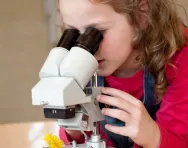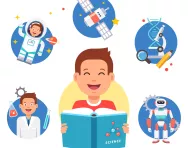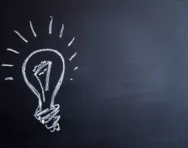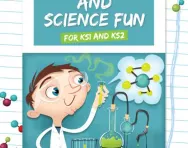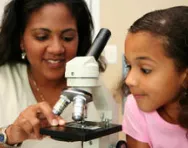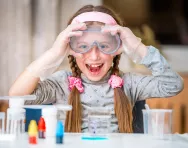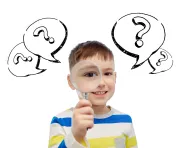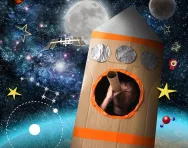Important update from TheSchoolRun
For the past 13 years, TheSchoolRun has been run by a small team of mums working from home, dedicated to providing quality educational resources to primary school parents. Unfortunately, rising supplier costs and falling revenue have made it impossible for us to continue operating, and we’ve had to make the difficult decision to close. The good news: We’ve arranged for another educational provider to take over many of our resources. These will be hosted on a new portal, where the content will be updated and expanded to support your child’s learning.
What this means for subscribers:
- Your subscription is still active, and for now, you can keep using the website as normal — just log in with your usual details to access all our articles and resources*.
- In a few months, all resources will move to the new portal. You’ll continue to have access there until your subscription ends. We’ll send you full details nearer the time.
- As a thank you for your support, we’ll also be sending you 16 primary school eBooks (worth £108.84) to download and keep.
A few changes to be aware of:
- The Learning Journey weekly email has ended, but your child’s plan will still be updated on your dashboard each Monday. Just log in to see the recommended worksheets.
- The 11+ weekly emails have now ended. We sent you all the remaining emails in the series at the end of March — please check your inbox (and spam folder) if you haven’t seen them. You can also follow the full programme here: 11+ Learning Journey.
If you have any questions, please contact us at enquiries@theschoolrun.com. Thank you for being part of our journey it’s been a privilege to support your family’s learning.
*If you need to reset your password, it will still work as usual. Please check your spam folder if the reset email doesn’t appear in your inbox.
Primary science glossary for parents
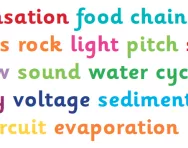
You'll find basic definitions of important primary-school science terms below. For a much more detailed, parent-friendly guide to how children are taught about each of these concepts in science, as well as examples, click on the link in the word.
TheSchoolRun also offers a free primary-school numeracy glossary and a free primary-school literacy glossary.
Adaptation
Adaptation is the process by which living creatures (animals and plants) adapt or evolve to survive in their environment and to live amongst a specific group of other living things.
Air resistance
Air resistance is the force on an object moving through air. Air resistance affects how fast or slowly objects move through the air.
Battery
In an electrical circuit, the battery is the cell that makes electricity.
Canines
Canines are teeth used for tearing and ripping food. Children learn about them as part of their study of teeth and how to take care of them.
Carnivores
Carnivores are animals who eat mainly meat and hunt their prey.
Circuit
A circuit is a closed loop for electricity to travel around. In primary school children learn about simple series circuits in which a single wire runs from a battery to a bulb and back again.
Circulatory system
The circulatory system is is the network of organs (including the heart) and vessels that allows the flow of blood, nutrients and oxygen around the body.
Condensation
Condensation is to turn from a gas into a liquid. In the water cycle, the evaporated water in the air cools and turns back into a liquid.
Conductor
A conductor is an object that allows electricity to flow through it easily. Objects made of metal are good conductors.
Consumer
Within a food chain, a consumer consumes a producer (usually a plant) or another consumer by eating it. Consumers can be primary, secondary, tertiary, etc consumers depending on their position in the food chain. Consumers are also called predators of the animals they eat; animals eaten by other animals are prey.
Current
Current is the amount of electricity flowing through a circuit. It is measured in amps.
Deciduous trees
Deciduous trees are those that shed their leaves in winter; their leaves are usually wide and flat.
Digestive system
The digestive system is made up of all the organs that help the body break down and process the food we eat.
Dissolving
Dissolving is a way of mixing a solid and a liquid. When a solid dissolves in a liquid it creates a solution.
Electricity
Electricity is a form of energy caused by electrons moving about.
Evaporation
Evaporation is the process by which a liquid, when heated, changes into a gas and rises into the air. Evaporation is part of the water cycle as water from the earth’s seas and oceans evaporates when is heated by the sun’s rays.
Evergreen trees
Evergreen trees (conifers) are those that keep their leaves all year around; they often have leaves shaped like needles.
Evolution
Evolution is the process of change to animal and plant species over long periods of time, or how plant species and animals have developed from generation to generation.
Fair test
A fair test is a controlled investigation used to answer a question in a scientific way.
Filtering
Filtering is a method of separating mixtures of solids and liquids.
Food chain
A food chain is a diagram that shows us how animals are linked by what they eat.
Food web
A food web is a set of linked food chains.
Force
Forces are the pushes and pulls which act on our bodies and the things around us to make things move and stop moving.
Freezing
Freezing is the process of changing a liquid into a solid.
Friction
Friction is a 'sticking' force – the resistance that a surface or object encounters when moving over another surface or object. Air resistance, water resistance and surface resistance are kinds of friction.
Gas
Gas is one of the three states of matter on Earth. A gas can flow, expand and be squeezed.
Germination
Germination is the process of a seed starting to grow to create a new plant.
Gravity
Gravity is the pulling force acting between the Earth and a falling object. Gravity pulls objects to the ground.
Habitat
A habitat is a home environment for plants and animals or other organisms.
Herbivores
Hernivores are animals whose diet mostly consists of plants.
Igneous rock
Igneous rock is one of the three kinds of rock present on Earth. It is formed when magma or lava from volcanoes cools; basalt and granite are both igneous rocks.
Incisors
Incisors are teeth used for biting and cutting food. Children learn about them as part of their study of teeth and how to take care of them.
Insulator
An insulator is an object that does not allow electricity to flow through it easily. Rubber, paper and some plastics are good insulators.
Invertebrates
Animals who don't have a bony skeleton are called invertebrates; insects, spiders and crabs are invertebrates.
Irreversible change
An irreversible change is a change that cannot be changed back again. Burning or mixing a liquid with bicarbonate of soda are examples of irreversible changes.
Life cycle
A life cycle is the different stages of life for a living thing.
Light
Light is the energy that allows us to see the world. A light source makes light by using another kind of energy (for example heat or nuclear energy).
Liquid
Liquid is one of thre three states of matter on Earth. A liquid forms a pool, flows or runs but it can't be stretched or squeezed.
Magnet
A magnet is an object that has a magnetic field (an invisible pattern of magnetism). A magnet attracts or repels other items.
Magnetic force
Magnetic force is an invisible force created by electrons. Magnetic force controls magnetism and electricity.
Magnetism
Magnetism is a force caused by the electrons in the atoms that make up everything around us.
Material
Materials are the matter or substance that objects are made from. Examples of materials are metal, plastic, wood, glass, ceramics, synthetic fibres and composites. Different materials have different features, or properties, which make them suitable for different uses.
Matter
Matter makes up our planet and the whole universe. On Earth, all matter exists in one of three different states: solid, liquid or gas.
Melting
Melting is the process of changing a solid into a liquid.
Micro-habitat
A micro-habitat is is a very specific, small home environment (like a tree or a pond) for plants, animals and insects.
Molars
Molars (and pre-molars) are teeth used for grinding and crushing food. Children learn about them as part of their study of teeth and how to take care of them.
Moon
A moon is a celestial object that orbits a planet.
Metamorphic rock
Metamorphic rocks like slate or marble are formed when other kinds of rock (igneous or sedimentary) are changed due to heat or pressure.
Omnivores
Ominivores are animals who eat a mixture of plants and meat.
Opaque
Things are opaque if light cannot pass through them.
Photosynthesis
Photosynthesis is the process plants use to make food from sunlight; it also requires carbon dioxide (from the air), and water (from the soil).
Pitch
Pitch is the quality of a sound. Depending on how fast or slowly something vibrates a sound's pitch with be high or low.
Planet
A planet is a celestial object that orbits a star like our solar system's Sun.
Pole
A magnet's north pole is the end of the magnet attracted to the Earth's North magnetic pole; a magnet's south pole is the end of the magnet attracted to the Earth's South magnetic pole.
Precipitation
Precipitation is rain, sleet, hail and snow, the water droplets which fall from the sky.
Producer
Within a food chain, a producer (usually a green plant) passes energy on to a consumer (an animal who eats the plant) through carbohydrates and proteins.
Reflection
Reflection is when light hits the surface of an object and then that light travels to our eyes so we can see. Mirrors catch light rays in front of them and throw it back in the direction it came from.
Reversible change
A reversible change is a change that can be changed back again. Melting and heating are examples of reversible changes.
Season
The four seasons (autumn, winter, spring, summer) we experience on our planet are caused by the Earth's tilt as it rotates around the Sun.
Sedimentary rock
Sedimentary rocks like sandstone or chalk are formed over millions of years when sediments (tiny pieces of rocks and organic matter) are pressed together.
Senses
Children learn about the body's five senses (hearing, sight, smell, touch and taste) as part of primary science.
Shadow
A shadow is the darkness formed when light rays cannot pass through something.
Sieving
Sieving is a method of separating mixtures of solids and liquids.
Simple machines
Simple machines work by turning small forces into larger ones, allowing us to perform tasks with more strength or speed. Examples of simple machines are levers, gears, pulleys, wheels and screws.
Solid
Solid is one of the three states of matter on Earth. A solid can hold its shape.
Sound
Sound is created when something vibrates and sends waves of energy (vibration) into our ears.
States of matter
Matter makes up our planet and the whole universe. On Earth, all matter exists in one of three different states: solid, liquid or gas. Depending on its temperature, matter can change state; heating, cooling, evaporating and condensation are ways in which a material changes state.
Sun
A sun is a star, a giant ball of hot gas. Our Sun makes life possible on Earth.
Surface resistance
Surface resistance is the force on objects moving across a surface.
Switch
A switch turns an electrical circuit on or off by starting or stopping a current flowing.
Transparent
Things are transparent if most light can pass through them.
Vertebrates
Vertebrates are animals with backbones / skeletons and include amphibians, birds, fish, mammals and reptiles.
Voltage
Voltage is the amount of electrical energy used. It is measured in volts.
Water cycle
The water cycle is the continuous journey water takes from the sea, to the sky, to the land and back to the sea.
Water resistance
Water resistance is the force on objects floating on or moving in water.
Printable version of the Primary Science Glossary
Buy a downloadable and printable version of the complete Primary Science Glossary for £2.99 in TheSchoolRun Bookshop.
